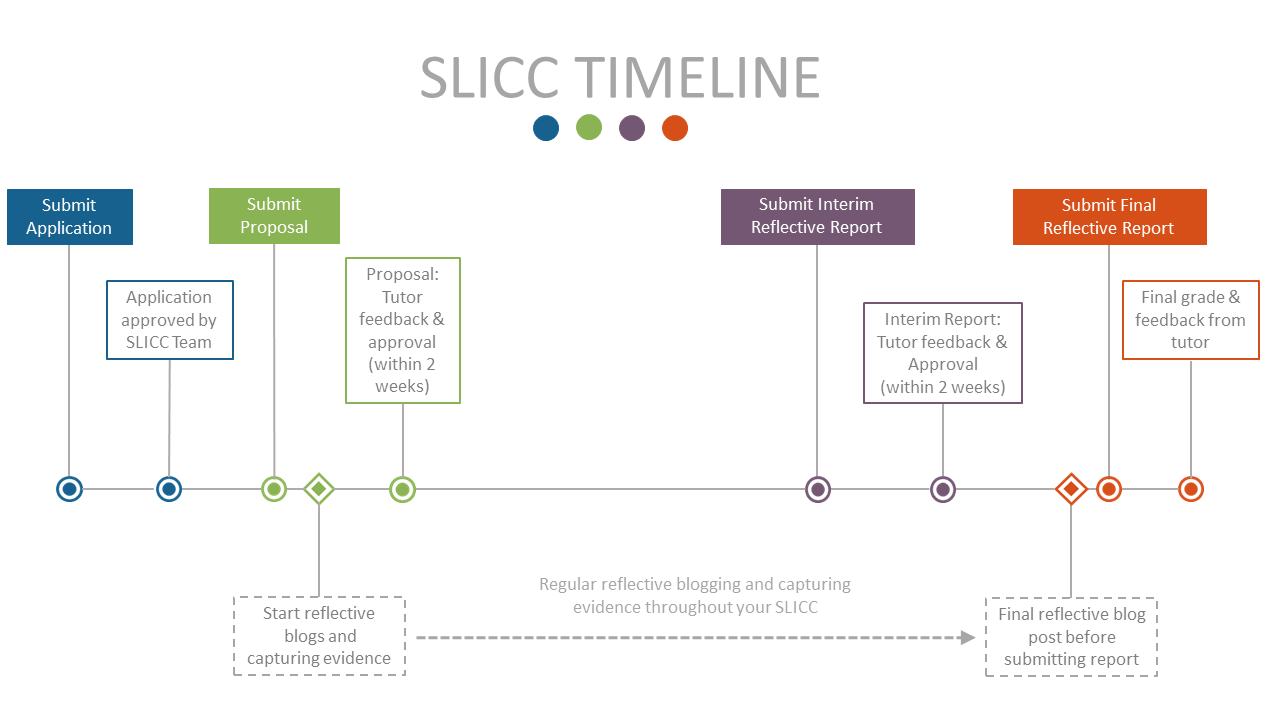Reflecting and reporting – During their SLICC, students will reflect regularly on their experiences, and submit an Interim and a Final Reflective Report about how they have addressed the SLICC learning outcomes.
Feedback and assessment – Students receive formative academic feedback from their SLICC tutor at the proposal stage, and formative feedback on their Interim Reflective Report, and then a mark and feedback on their Final Reflective Report. Students must also self-assess their Final Reflective Report
Learning from challenges and setbacks – Students may not achieve everything they set out to do, however the SLICC reflective framework allows for this, enabling students to show how they have learnt from working on problems and even their mistakes, and demonstrating how they would approach things differently in the future.

APPLICATION:
|
PROPOSAL:
|
SLICC commences:
|
INTERIM REFLECTIVE REPORT:
|
FINAL REFLECTIVE REPORT:
|
Dr Gavin McCabe, SLICCs Co-lead, talks through what SLICCs are, each stage in the process, resources available and tips for students and staff.

